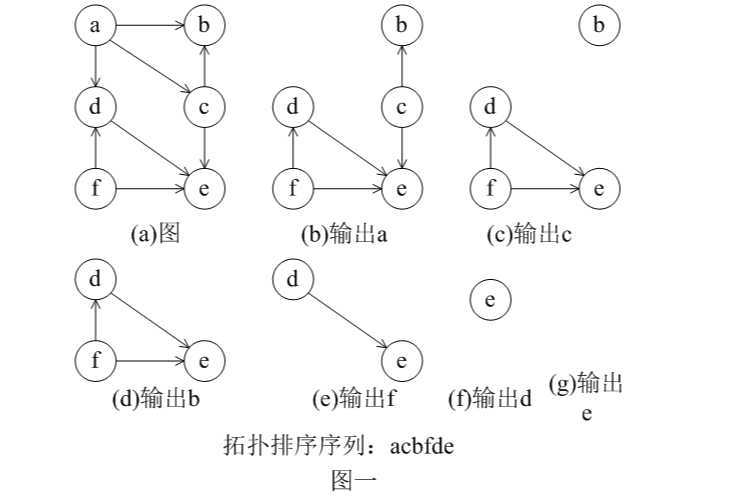
1.图
amap=dict()
amap[a]=[b,c,d]
amap[c]=[b,e]
amap[d]=[e]
amap[f]=[d,e]2.每个节点的入度
a b c d e f
0 1 2 3 4 5 6
indegree=[0,0,2,1,2,3,0]3.用于存放入度为0的节点的队列
q=queue.PriorityQueue()
4.用于存放拓扑排序的结果的列表
ans=[]
1.先将入度为0的节点都放入队列:
for j in range(1,n+1):
if indegree[j]==0:
q.put[j]2.像上面的图那样,每处理完一个节点,将剩下的与它有关的节点的入度减1,若为0则放入队列:
while not q.empty():
t=q.get()
ans.append(t) #从q中出队放入结果中
if t in amap:
for x in amap[t]:
indegree[x]-=1 #入度减1
if indegree[x]==0: #为0的入队
q.put(x)参考:https://blog.csdn.net/qq_41713256/article/details/80805338
原文:https://www.cnblogs.com/holaworld/p/12388935.html